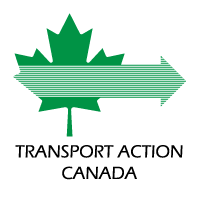The DOT 111 and CPC 1232 cars were banned from carrying any hazardous cargo as of 31 October, 2016 by TC Protective Direction 38, see TC website.
Protective Direction No. 38 (Effective date 2016/10/31)
I, Marc Garneau, Minister of Transport, am issuing this Protective Direction under section 32 of The Transportation of Dangerous Goods Act, 1992 (Act) considering it necessary to deal with an emergency that involves a danger to public safety, do hereby direct that:
(1) A person must not import, offer for transport, handle or transport of any dangerous goods listed in subsection (2) and included in Packing Group I, II or III in a tank car unless the tank car
a) is a Class 105, 112, 114, 115, 120;
b) is any other class of tank car described in section 5.15.7 of the Transportation of Dangerous Goods Regulations;
c) is a TC 117R tank car;
d) is a TC 117 tank car: or
e) Is a TC 117P tank car
Hazardous cargoes are:
a) UN1267, PETROLEUM CRUDE OIL;
b) UN3494, PETROLEUM SOUR CRUDE OIL, FLAMMABLE, TOXIC; and
c) UN1268, PETROLEUM DISTILLATES, N.O.S., or PETROLEUM PRODUCTS, N.O.S. that is crude oil.
While I don’t want to defend most of Garneau’s actions It seems that he has met your requirements.
You also say;
“The people of Mégantic paid a terrible price for failures of a dysfunctional regulatory system. The government must admit its responsibility and commit now to building forthwith a rail bypass around the town, which they are demanding. Fundamental reforms are needed to persuade skeptical public that that lessons of Lac-Mégantic have been learned.”
Then are you also going to advocate building a rail bypass around every other town that crude oil might travel through?
As I have said elsewhere, no one reads or comments on your website except me, and I am not exactly a fan.
